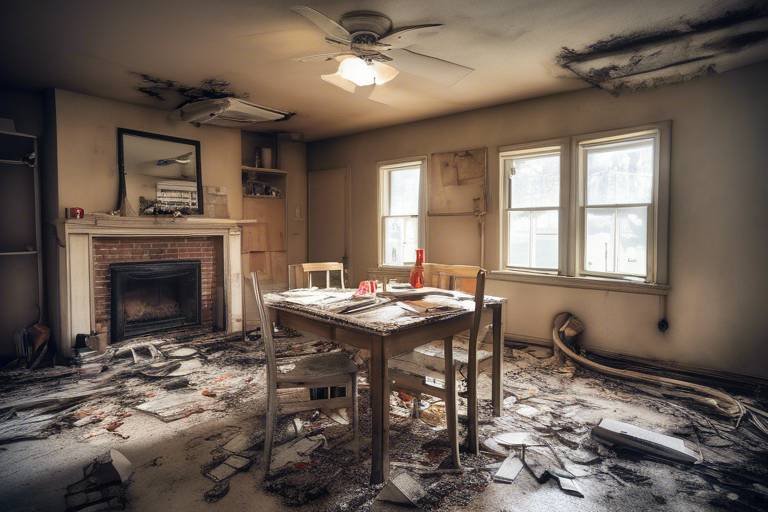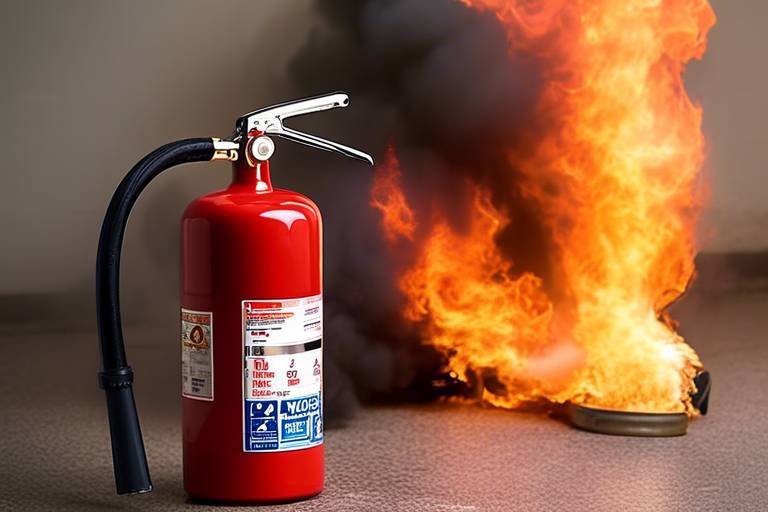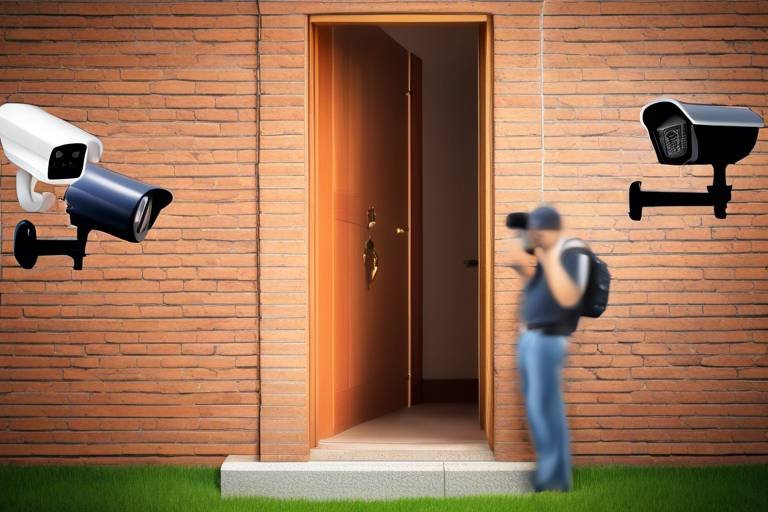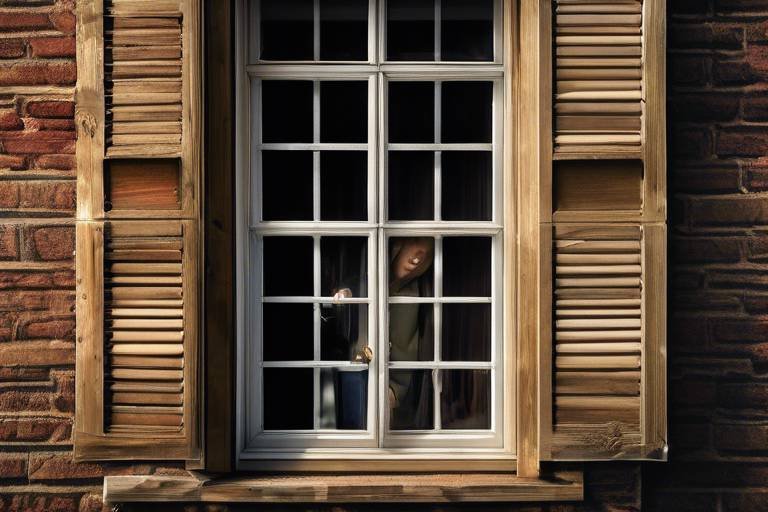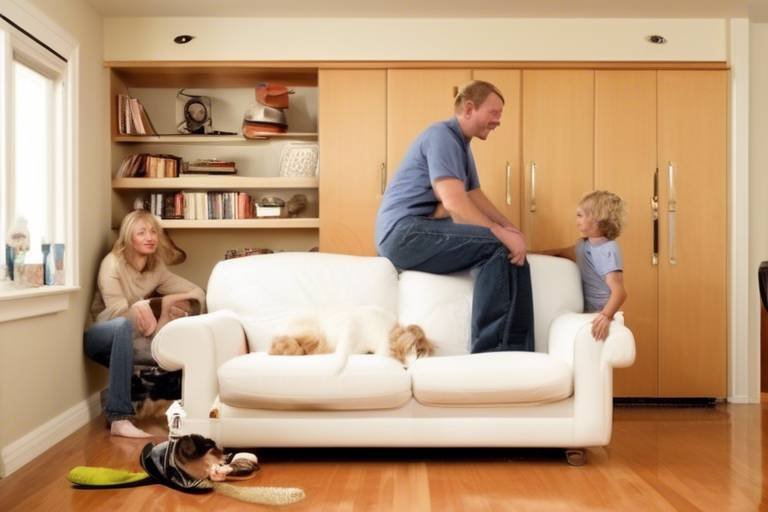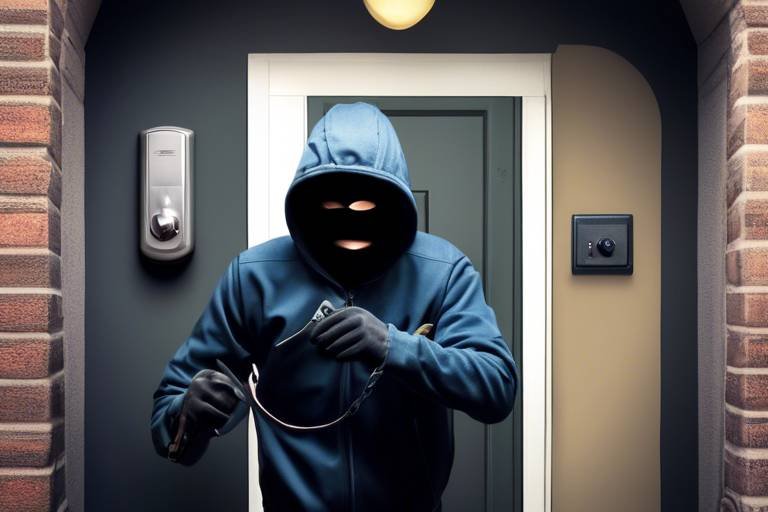Is Your Swimming Pool Secure - Safety Tips
Swimming pools can be a source of endless fun and relaxation, but they also come with significant responsibilities. Ensuring that your pool is secure is not just a matter of convenience; it’s a crucial step in safeguarding the lives of both children and adults. Imagine the peace of mind you'll have knowing that your loved ones can enjoy the water without the lurking dangers of accidents. In this article, we will delve into essential safety tips that every pool owner should implement to create a secure swimming environment.
Identifying the common risks associated with swimming pools is crucial for maintaining a safe environment. Pools can be a magnet for accidents if proper precautions aren't taken. The potential hazards range from slips and falls to drowning incidents, which can happen in the blink of an eye. Some common risks include:
- Slippery Surfaces: Wet tiles or deck areas can lead to falls.
- Lack of Supervision: Children left unattended near water are at a higher risk.
- Inadequate Barriers: Poorly constructed or nonexistent fences can allow easy access for children and pets.
- Improper Storage of Pool Chemicals: Chemicals should be stored safely to prevent accidental poisoning.
By being aware of these risks, you can take proactive steps to minimize them and ensure a safer swimming experience for everyone.
Safety barriers, such as fences and gates, are vital for pool security. They create a physical separation between the pool and potential hazards, particularly for young children who may wander into the area unsupervised. When considering barriers, it’s essential to evaluate the types available and how effectively they can keep unsupervised individuals away from the pool area.
Selecting the appropriate fence for your pool can make a significant difference in safety. You want a fence that not only meets safety standards but also complements the aesthetics of your backyard. Options include:
- Wood Fences: These offer a natural look but may require more maintenance.
- Aluminum Fences: Durable and low maintenance, they provide a sleek appearance.
- Glass Fences: These provide an unobstructed view of the pool area while maintaining safety.
When choosing a fence, ensure it meets local safety codes and regulations to avoid any legal issues.
The height of your pool fence is essential for preventing access. Generally, a fence should be at least 4 feet tall to deter children from climbing over it. Additionally, consider implementing access control measures, such as:
- Self-locking Gates: Ensure gates automatically lock when closed.
- Keyed Locks: Use locks that require a key to open, preventing easy access.
These measures can significantly enhance the security of your swimming pool area.
Incorporating safety features into pool gates can prevent accidental openings. Essential gate features include:
- Self-closing Mechanisms: Gates should close automatically after someone passes through.
- Childproof Locks: Use locks that are difficult for children to operate.
These features are crucial in ensuring that your pool remains a safe environment for all.
Using pool covers and alarms adds an extra layer of safety. Pool covers can prevent unauthorized access while also keeping the water clean. There are various types of covers, including:
- Safety Covers: These are designed to hold a specific weight and prevent accidental falls.
- Mesh Covers: Allow water to drain while preventing access.
Additionally, alarm systems can alert you to any unauthorized access to the pool, providing peace of mind when you're not around.
Proper supervision and education about pool safety are paramount. Adult supervision is essential, especially when children are swimming. It’s not enough to be nearby; someone should be actively watching the pool to respond quickly if needed. Furthermore, teaching children about water safety can empower them to recognize dangers and act responsibly around water.
Enrolling children in swimming lessons is a proactive safety measure. These lessons not only teach essential swimming skills but also build confidence in the water. Children who are comfortable swimming are less likely to panic in an emergency situation, significantly reducing drowning risks.
Being prepared for emergencies can save lives. Every pool owner should have essential emergency procedures and equipment on hand, including:
- Rescue Equipment: Lifebuoys, reaching poles, and first aid kits should be readily accessible.
- CPR Training: Knowing how to perform CPR can be invaluable in an emergency.
Having a plan in place ensures that you can respond swiftly in case of an accident, making your pool a much safer place.
Q: What is the best type of pool fence?
A: The best type of pool fence is one that is at least 4 feet tall, made of durable materials, and meets local safety codes. Aluminum and glass fences are popular choices due to their strength and aesthetics.
Q: How often should I check my pool safety equipment?
A: It's advisable to check your pool safety equipment, including fences, gates, and alarms, at least once a month to ensure they are functioning correctly.
Q: Are pool covers necessary?
A: Yes, pool covers are essential for preventing unauthorized access and keeping the pool clean. Safety covers are particularly effective in providing security.

Understanding Pool Safety Risks
When it comes to enjoying your swimming pool, understanding the potential safety risks is paramount. Pools are a source of fun and relaxation, but they can also pose serious dangers if proper precautions aren't taken. It's essential to recognize that accidents can happen in the blink of an eye, turning a joyful day into a tragic one. According to statistics, drowning is one of the leading causes of unintentional injury-related deaths for children, making pool safety a critical concern for every pool owner.
One of the most common risks is the presence of unsupervised children around the pool. Children are naturally curious and may wander near the pool without understanding the dangers that lurk beneath the surface. It's vital to ensure that they are always supervised by a responsible adult who can react quickly in case of an emergency. However, supervision alone isn't enough; understanding the inherent risks associated with water is equally important.
Additionally, slips and falls around the pool area can lead to serious injuries. Wet surfaces can become slippery, and without proper safety measures in place, individuals can easily lose their footing. To mitigate this risk, consider using non-slip materials around the pool deck and ensuring that any toys or floatation devices are stored away when not in use.
Another significant risk factor is the lack of proper safety equipment. Every pool owner should be equipped with life-saving devices, such as life rings, floats, and a first-aid kit. These items can make a difference in emergency situations, allowing for quick responses that can save lives. It's also wise to have a phone nearby for quick access to emergency services.
Moreover, understanding the risks associated with pool chemicals is crucial. Improper handling or storage of pool chemicals can lead to dangerous reactions or contamination of the water. Always store chemicals in a safe, dry place and ensure that they are out of reach of children. Regularly testing the water quality and maintaining proper chemical balances is essential for a safe swimming environment.
In summary, recognizing the potential risks associated with swimming pools is the first step in creating a safe environment for both children and adults. By being aware of these hazards and taking proactive measures, you can significantly reduce the likelihood of accidents and ensure that your pool remains a safe haven for fun and relaxation.

Installing Safety Barriers
When it comes to ensuring the safety of your swimming pool, installing safety barriers is not just a good idea; it's absolutely essential. These barriers act as the first line of defense against potential accidents, particularly for children and pets who may wander into the pool area unsupervised. Think of a safety barrier as a protective shield that keeps your loved ones safe while allowing you to enjoy your pool without constant worry. But what types of barriers are available, and how do you choose the right one?
There are several types of safety barriers to consider when securing your pool. The most common options include fences, gates, pool covers, and alarms. Each of these plays a unique role in pool safety:
- Fences: These are the most visible and effective barriers. They should be at least four feet high and made from materials that are difficult to climb.
- Gates: An essential component of fencing, gates should be self-closing and self-latching to ensure they remain securely shut.
- Pool Covers: These not only keep debris out of the pool but also provide a physical barrier when the pool is not in use.
- Alarms: Pool alarms can alert you whenever someone enters the pool area without supervision.
Now, let’s dive deeper into the most critical aspect of safety barriers: the fence. Choosing the right fence is crucial for effective pool safety. You want a fence that not only meets safety standards but also fits your home's aesthetic. Materials like aluminum, vinyl, and mesh are popular choices, each offering a unique blend of durability and style. For example, aluminum fences are known for their strength and low maintenance, while mesh fences are see-through, allowing visibility into the pool area, which can be reassuring for parents.
But it’s not just about the materials; the design of the fence also plays a vital role. A fence should have vertical slats that are spaced closely enough to prevent children from squeezing through. Moreover, the height of your fence is an important consideration. The recommended height is at least four feet, but some experts suggest going even higher for added security. Remember, the taller the fence, the harder it is for someone to climb over.
In addition to height, access control is another critical element. This involves ensuring that any gates leading to the pool area are secure. Gates should be equipped with locks that are out of reach of young children. Self-closing gates are a fantastic feature, as they automatically close behind anyone who passes through, further minimizing the risk of accidental access. Imagine the peace of mind you’d feel knowing that your gate will close securely every time, even if you’re distracted for just a moment!
To put it all together, here’s a quick overview of important safety features to consider when installing a pool fence:
| Feature | Description |
|---|---|
| Height | At least 4 feet high to deter climbing |
| Self-closing Gates | Automatically close after use to prevent access |
| Locking Mechanism | Locks that are out of reach of children |
| Material | Durable materials like aluminum, vinyl, or mesh |
In conclusion, installing safety barriers around your swimming pool is a crucial step in safeguarding your loved ones. By choosing the right materials, ensuring proper height, and incorporating secure access features, you can create a safe environment for everyone. Remember, a little investment in safety today can prevent a lifetime of regret tomorrow. So, take the plunge and secure your pool with the best barriers available!
Q: What is the best type of fence for a swimming pool?
A: The best type of fence depends on your specific needs, but aluminum and mesh fences are popular choices due to their durability and visibility.
Q: How tall should a pool fence be?
A: A pool fence should be at least 4 feet high to effectively prevent unauthorized access.
Q: Are pool alarms effective?
A: Yes, pool alarms are effective in alerting you to unauthorized access and can be a great addition to your safety measures.

Choosing the Right Fence
When it comes to ensuring your swimming pool is a safe haven rather than a hazardous zone, choosing the right fence is crucial. Think of your pool fence as the first line of defense against accidents. It’s not just about aesthetics; it’s about creating a barrier that keeps children and pets safe while enhancing the beauty of your backyard. So, what should you consider when selecting the perfect fence for your pool?
First and foremost, you need to think about the materials. There are several options available, each with its own benefits. For instance, aluminum fences are popular due to their durability and low maintenance. They resist rust and corrosion, making them ideal for outdoor settings. On the other hand, wooden fences offer a classic look, but they require regular upkeep to prevent rot and decay. If you prefer a modern touch, glass fences provide an unobstructed view of your pool while still maintaining safety. However, they can be more costly and may require professional installation.
Next, consider the design of the fence. A fence should not only be functional but also complement your home's style. For example, if you have a contemporary home, a sleek glass or aluminum fence might be the best fit. Conversely, a rustic wooden fence could enhance a more traditional property. The design should also include vertical slats that prevent climbing, as a child could easily scale a fence with horizontal bars.
Another critical factor is the height of the fence. The recommended height for pool fences is typically at least 4 feet. This height is generally effective in keeping out children who might try to access the pool unsupervised. However, it’s not just about height; access control is equally important. Gates should be self-closing and self-latching, ensuring that even if someone forgets to close the gate, it will shut securely behind them. This feature is vital in preventing accidental drownings.
Finally, don’t forget about local regulations. Many areas have specific laws regarding pool fencing, including height requirements and types of materials permitted. Always check with your local authorities to ensure that your fence complies with these regulations. Failure to do so could result in fines or, worse, an unsafe environment.
In summary, choosing the right fence for your swimming pool is a multifaceted decision that involves considering materials, design, height, access control, and local regulations. By taking the time to select a fence that not only protects but also enhances your outdoor space, you’ll be investing in the safety and enjoyment of your pool for years to come.
- What is the best material for a pool fence? Aluminum is often preferred for its durability and low maintenance, but glass and wood are also popular choices depending on your aesthetic preferences.
- How high should a pool fence be? A minimum height of 4 feet is recommended to prevent children from climbing over.
- Do I need a permit to install a pool fence? Yes, it’s essential to check local regulations as many areas require permits for pool fencing.
- What safety features should my pool gate have? Gates should be self-closing and have a self-latching mechanism to enhance safety.

Height and Access Control
When it comes to ensuring the safety of your swimming pool, one of the most critical aspects to consider is the height of your pool fence. A well-constructed fence acts as the first line of defense against accidental drownings or unauthorized access. But what exactly is the right height? Generally, experts recommend that pool fences should be at least 4 feet (48 inches) tall. This height is typically sufficient to deter young children from climbing over. However, if you have particularly adventurous little ones or live in an area with a lot of neighborhood kids, you might want to consider going even higher.
In addition to height, it's crucial to think about access control. A tall fence is only effective if it’s adequately secured. Consider implementing features such as self-closing gates, which automatically shut behind anyone who passes through. This simple mechanism can significantly reduce the risk of a child wandering into the pool area without supervision. Furthermore, gates should be equipped with locks that are out of reach of small children. The combination of height and secure access control can create a formidable barrier against potential accidents.
It’s also important to regularly inspect your fence and gate to ensure they are in good condition. Over time, wear and tear can compromise their effectiveness. Look out for any gaps, rust, or damage that could allow a child to slip through or climb over. By maintaining your fence and gate, you not only enhance safety but also gain peace of mind knowing you’ve taken proactive steps to protect your loved ones.
In summary, a secure pool area is a combination of a properly sized fence and effective access control measures. By prioritizing these elements, you can create a safe environment that allows for enjoyable swimming experiences without the constant worry of accidents.
- What is the recommended height for a pool fence? - Experts recommend a minimum height of 4 feet (48 inches) to effectively deter young children.
- How often should I check my pool fence and gate? - It's advisable to inspect your fence and gate at least once a month for any signs of wear and tear.
- Are self-closing gates necessary? - Yes, self-closing gates are an important safety feature that helps prevent unauthorized access to the pool area.
- What other safety measures can I take? - Besides fences and gates, consider installing pool covers and alarms for additional safety.

Gate Safety Features
When it comes to ensuring the safety of your swimming pool, the gate is often the first line of defense. A well-designed gate can significantly reduce the risk of accidents, especially when it comes to children or pets accessing the pool area unsupervised. It's essential to incorporate multiple safety features into your pool gate to enhance its effectiveness. One of the most crucial aspects is the self-closing mechanism. This feature ensures that the gate automatically closes after being opened, making it much less likely for someone to forget to close it behind them. Imagine a scenario where a child runs towards the pool; if the gate doesn't close by itself, the risk of an accident increases dramatically.
Additionally, locks are a vital component of gate safety. Opt for a lock that is child-proof and difficult for little hands to manipulate. A simple latch that can be easily opened by an adult but remains secure against curious children is ideal. Some gates even come with keyed locks or combination locks, adding an extra layer of security. It's also wise to consider the height of the latch; it should be positioned high enough that children cannot reach it, while still being accessible for adults.
Another feature that can enhance safety is a gate alarm. This device sounds an alert whenever the gate is opened, providing an immediate notification if someone enters or exits the pool area. This is particularly useful for parents who may be distracted or for those who have multiple children to supervise. You can think of it as a silent guardian, always on the lookout for unauthorized access. Some advanced systems even allow you to customize the alarm settings, ensuring you are alerted only when necessary.
In addition to these features, consider the material of your gate. Opt for durable materials like aluminum or vinyl, which are not only weather-resistant but also difficult to climb. A gate that is sturdy and well-constructed will withstand wear and tear over time, ensuring that your pool area remains safe for years to come. Remember, the goal is to create a barrier that is not only functional but also blends seamlessly with your backyard design.
Lastly, regular maintenance of your gate is essential. Check for any signs of wear, such as rust or loose hinges, and make necessary repairs immediately. A gate that is not functioning correctly can compromise the safety of your pool area. In summary, a combination of self-closing mechanisms, secure locks, alarms, durable materials, and regular maintenance will ensure that your pool gate serves as a reliable safety feature, keeping your loved ones protected.

Pool Covers and Alarms
When it comes to swimming pool safety, one of the most effective ways to enhance security is by utilizing pool covers and alarms. These two features not only provide peace of mind for pool owners but also serve as critical barriers against potential accidents. Imagine a world where you can enjoy your backyard oasis without the constant worry of unsupervised access. That's the kind of tranquility that a good pool cover and an effective alarm system can offer.
Pool covers come in various types, each designed to cater to specific needs and preferences. For instance, solid safety covers are robust and can support the weight of a child or pet, while mesh covers allow water to drain through, preventing puddles that can attract children. It's essential to choose a cover that not only fits your pool perfectly but also complies with local safety regulations. A well-fitted cover acts as a physical barrier, reducing the risk of accidental drownings significantly.
Additionally, incorporating a pool alarm system can serve as an extra layer of protection. These alarms are designed to detect movement in the water and can alert you immediately if someone enters the pool area without supervision. There are different types of alarms available, including surface wave alarms that monitor the water's surface and subsurface alarms that detect disturbances below the surface. By investing in a reliable alarm system, you can enjoy your time away from the pool with confidence, knowing you’ll be alerted to any unexpected activity.
Furthermore, it's important to remember that while pool covers and alarms are excellent safety measures, they should not replace adult supervision. They work best when combined with vigilant oversight and education about pool safety. If you’re considering installing these safety features, here are some key points to keep in mind:
| Feature | Benefits |
|---|---|
| Pool Covers |
|
| Pool Alarms |
|
In conclusion, investing in quality pool covers and alarm systems is a smart move for any pool owner. These features not only enhance safety but also allow you to enjoy your pool with less stress. Remember, safety is a shared responsibility, and by taking proactive measures, you can create a secure environment for everyone.
Q: How effective are pool covers in preventing accidents?
A: Pool covers can be highly effective in preventing accidents when properly installed and maintained. They act as a physical barrier that can keep children and pets out of the pool area.
Q: Do pool alarms really work?
A: Yes, pool alarms are designed to detect movement in the water. They can provide immediate alerts if someone enters the pool without supervision, making them a valuable safety feature.
Q: Are there any legal requirements for pool safety features?
A: Legal requirements for pool safety features vary by location. It's important to check local regulations to ensure compliance with safety standards.

Supervision and Education
When it comes to pool safety, proper supervision and education are absolutely paramount. Imagine a beautiful sunny day, the sound of laughter, and splashes of water echoing around your backyard. It’s a perfect setting for fun, but without vigilant supervision, it can quickly turn into a scene of panic. As a pool owner, you have the responsibility to ensure that everyone using the pool is safe, especially children who may not fully understand the dangers associated with water.
Adult supervision is like a lifeguard on duty, always alert and ready to step in at a moment's notice. It’s essential to have an adult present at all times when children are swimming. This means no multitasking! It’s easy to get distracted by your phone or a conversation, but those moments can be critical. In fact, studies show that most drowning incidents occur when adults are not actively supervising. So, make it a rule: if kids are in the pool, someone needs to be watching them closely.
But supervision isn’t just about being present; it’s about being engaged. Get in the water with them, play games, and teach them the rules of the pool. This not only enhances safety but also builds confidence in young swimmers. Speaking of which, teaching children about water safety is equally important. They should understand the basics, such as never running near the pool, not diving into shallow water, and what to do in case of an emergency. You can even create a fun game out of learning these rules!
To further enhance safety, consider enrolling your children in swimming lessons. These lessons are invaluable, offering them the chance to learn essential swimming techniques while also instilling a healthy respect for water. The benefits are clear:
- Confidence: Children who know how to swim feel more secure in the water.
- Skills: They learn vital skills that can save their lives.
- Awareness: Lessons teach them to recognize potential dangers in and around the pool.
Another crucial aspect of pool safety is emergency preparedness. Accidents can happen, even with the best supervision. Therefore, it’s important to be ready for any situation. This includes having a first-aid kit nearby, knowing how to perform CPR, and having a phone accessible to call for help if needed. You might even want to take a first-aid course to be fully prepared. After all, being proactive can make all the difference!
In summary, supervision and education are the twin pillars of pool safety. By keeping a watchful eye on swimmers and teaching children about water safety, you can create a secure environment for everyone to enjoy. Remember, a little knowledge and vigilance go a long way in preventing accidents and ensuring that your pool remains a source of joy rather than a cause for concern.
| Question | Answer |
|---|---|
| What age should children start swimming lessons? | Most children can start swimming lessons as early as age 4, but it varies based on individual readiness. |
| How can I ensure my pool is safe for children? | Install safety barriers, supervise at all times, and educate children about water safety. |
| What should I do in case of a pool emergency? | Call for help immediately, administer CPR if needed, and have a first-aid kit available. |
| Are pool alarms effective? | Yes, pool alarms can alert you to unauthorized entry, adding an extra layer of safety. |

Swimming Lessons for Children
When it comes to ensuring the safety of children around water, enrolling them in swimming lessons is one of the most effective strategies you can employ. Not only do swimming lessons teach children essential skills, but they also instill a sense of confidence and respect for water. Imagine your child splashing around joyfully, their laughter echoing as they swim with ease, knowing they have the skills to keep themselves safe. This peace of mind for parents is invaluable!
Swimming lessons provide a structured environment where children can learn at their own pace, guided by trained instructors who understand the nuances of water safety. These lessons typically cover a variety of skills, including floating, kicking, and basic strokes. As children progress, they gain the ability to navigate the water effectively, which significantly reduces the risk of drowning. In fact, studies have shown that children who have taken swimming lessons are less likely to experience drowning incidents compared to those who haven’t.
Moreover, swimming lessons are not just about learning to swim; they also emphasize the importance of safety rules around water. Children learn to recognize potential hazards, understand the importance of adult supervision, and develop skills to help themselves and others in case of an emergency. This comprehensive approach to water safety can create lifelong habits that keep children safe, whether they're at home in the pool or visiting a friend's house.
Many community centers, local pools, and private swim schools offer programs tailored specifically for children. These programs often cater to various age groups and skill levels, ensuring that every child can benefit from swimming education. When selecting a program, consider the following factors:
- Instructor Qualifications: Ensure that instructors are certified and experienced in teaching children.
- Class Size: Smaller class sizes allow for more personalized attention, enhancing the learning experience.
- Curriculum: Look for a program that balances skill development with safety education.
- Location and Schedule: Choose a facility that is convenient and offers classes that fit your family's schedule.
In conclusion, swimming lessons are a proactive measure that can significantly enhance your child's safety around water. By investing in these lessons, you’re not just teaching them how to swim; you’re equipping them with vital skills that can save their lives. So, why wait? Dive into the world of swimming lessons today and watch your child transform into a confident swimmer!
Q: At what age should I start my child in swimming lessons?
A: Most children can start swimming lessons as early as 6 months old, with parent-child classes. Formal lessons typically begin around ages 3 to 4.
Q: How long does it take for a child to learn to swim?
A: The time it takes to learn to swim varies by child and their comfort level in the water. Generally, children can learn basic swimming skills within a few weeks to a few months of regular lessons.
Q: Are private lessons better than group lessons?
A: It depends on the child's learning style. Private lessons offer individualized attention, which can be beneficial for some, while group lessons provide social interaction and can be more affordable.
Q: What should my child wear to swimming lessons?
A: A well-fitting swimsuit, swim cap (if necessary), and goggles are typically recommended. It's also a good idea to bring a towel and a change of clothes.
Q: How can I ensure my child stays safe while swimming?
A: Always supervise your child while they are in or near water, teach them to swim, and make sure they understand the rules of water safety.

Emergency Preparedness
When it comes to pool safety, being prepared for emergencies is not just a good idea; it's a necessity. Accidents can happen in the blink of an eye, and having a solid plan in place can make all the difference between a close call and a tragedy. So, how can you ensure that you are ready for any unforeseen incidents? First and foremost, it's crucial to have a well-stocked emergency kit specifically tailored for poolside situations. This kit should include items such as:
- First Aid Supplies: Band-aids, antiseptic wipes, gauze, and adhesive tape.
- Rescue Equipment: A reaching pole, life ring, or flotation device.
- CPR Instructions: A laminated guide on how to perform CPR can be a lifesaver.
- Emergency Contact Numbers: Keep a list of local emergency services and poison control.
But having an emergency kit is just the beginning. You should also ensure that all adults and responsible teenagers in your household are trained in CPR and basic first aid. This training can empower them to act swiftly and effectively in case of an emergency. Imagine the peace of mind knowing that your loved ones can step in and provide critical help if needed!
Moreover, it's essential to create and communicate an emergency action plan with everyone who uses the pool. This plan should outline the steps to take in various scenarios, such as a drowning incident, a severe injury, or even a medical emergency unrelated to the pool. Make sure that everyone knows:
- How to call for help
- Where the emergency kit is located
- How to perform basic rescue techniques
Additionally, consider installing pool alarms that alert you when someone enters the pool area unexpectedly. These devices can serve as an early warning system, giving you a crucial few seconds to react. There are various types of alarms available, from those that attach to the pool's edge to more advanced systems that can detect movement in the water. Choose one that fits your needs and budget.
Finally, regular drills can be an excellent way to keep everyone sharp. Practice what to do in an emergency, so it becomes second nature. Just like fire drills in schools, these practices can help reduce panic and confusion in real-life situations. Remember, preparedness is not just about having the right tools; it's also about fostering a culture of safety and vigilance around your pool.
In conclusion, emergency preparedness is a vital component of pool safety. By taking proactive measures, educating your family, and having a clear action plan, you can significantly reduce the risks associated with pool usage. After all, a secure pool is a happy pool, where everyone can enjoy the water without fear!
- What should I include in my pool emergency kit? Your kit should contain first aid supplies, rescue equipment, CPR instructions, and emergency contact numbers.
- How often should I practice emergency drills? It's advisable to conduct emergency drills at least once a season to ensure everyone is familiar with the procedures.
- Are pool alarms really effective? Yes, pool alarms can provide an additional layer of safety by alerting you to unexpected entries into the pool area.
Frequently Asked Questions
- What are the main risks associated with swimming pools?
Swimming pools can pose several risks, including drowning, slips and falls, and accidental injuries. It's essential to be aware of these hazards to take the necessary precautions to keep everyone safe.
- How can I secure my pool area effectively?
Installing safety barriers such as fences and gates is crucial. Make sure these barriers are high enough and have self-closing gates with locks to prevent unauthorized access, especially by children.
- What type of fence is best for pool safety?
The best type of fence for pool safety is one that is at least 4 feet high, made from durable materials like aluminum or vinyl, and has no footholds. It should also meet local safety regulations while blending in with your yard's aesthetics.
- Are pool covers and alarms really necessary?
Absolutely! Pool covers can prevent accidental falls, while alarms alert you to any unauthorized access. Together, they significantly enhance your pool's safety.
- How important is supervision around the pool?
Supervision is extremely important! Adults should always keep a close eye on children in or near the pool. Even if kids are strong swimmers, accidents can happen in the blink of an eye.
- Should I enroll my children in swimming lessons?
Yes! Swimming lessons are a fantastic way to teach kids water safety and build their confidence in the water. This can drastically reduce the risk of drowning.
- What emergency equipment should I have near the pool?
Every pool owner should have a first aid kit, a rescue pole, a life ring, and a phone nearby for emergencies. Being prepared can make a huge difference in an emergency situation.



